Are you a student or parent of a student wondering how to reduce your tax bill? Look no further than the tuition tax credit! This tax credit is available to Canadian students who pay tuition fees for post-secondary education. But how does it work, and who is eligible? In this blog post, we’ll break down everything you need to know about the tuition tax credit in Canada. We’ve got you covered, from eligibility requirements to claiming the credit on your taxes. So sit back, grab a cup of coffee, and dive into the world of tuition tax credits!
What is a Tuition Tax Credit?
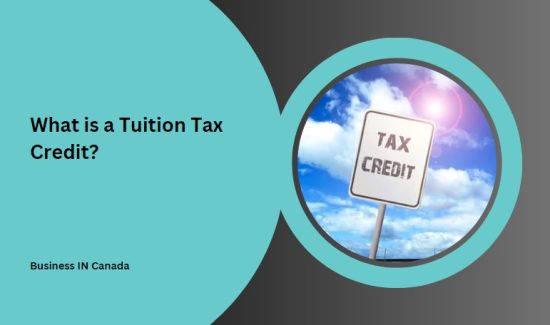
A tuition tax credit is a non-refundable tax credit that reduces the amount of income tax you owe based on the number of eligible tuition fees paid for post-secondary education. It is available to Canadian residents who are enrolled in qualifying educational programs at accredited institutions.
The government offers this credit as an incentive to encourage Canadians to pursue higher education and improve their skills and knowledge. The tuition tax credit allows students, or their parents, if they are claimed as dependents, to claim a portion of eligible tuition fees paid during the year when filing taxes.
It’s important to note that only some types of courses qualify for the tuition tax credit. Eligible courses must be taken at a designated institution and provide students with skills that can be used in their current or future employment. This includes colleges, universities, vocational schools, trade schools, and other approved educational programs.
The tuition tax credit provides financial support for those pursuing post-secondary education while also helping them reduce their overall income taxes owed.
What Are the Eligibility Requirements?
The tuition tax credit is a valuable benefit that can help offset the costs of post-secondary education for both students and parents. To be eligible for this credit, you must have paid tuition fees to an accredited institution in Canada during the taxation year or have unused credits carried forward from previous years.
It’s important to note that some restrictions apply to who can claim the tax credit, such as residency status and age. However, if you meet these requirements, it’s definitely worth taking advantage of this opportunity to reduce your tax bill.
By understanding how the tuition tax credit works and knowing whether or not you’re eligible to claim it, you can ensure that you’re getting all of the available benefits when filing your taxes. Don’t miss out on this valuable opportunity – speak with a qualified tax professional today to learn more about how you can take advantage of Canada’s tuition tax credit program.
How Do Tax Credits From Tuition Work?
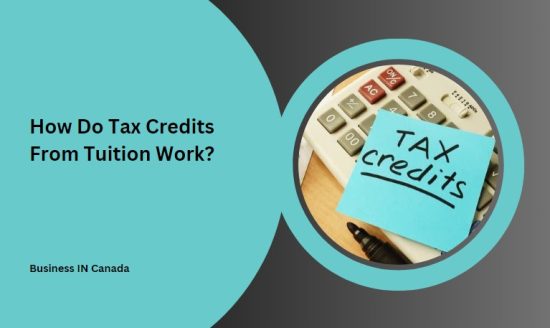
Tax credits from tuition work by reducing the amount of income tax you owe to the government. When you pay for eligible tuition fees, you will receive a receipt or statement that shows how much you paid during the year. This information is used to determine your eligibility for a tuition tax credit.
The federal government and some provinces in Canada offer tuition tax credits, which can be claimed on your tax return. The amount of credit varies depending on where you live and how much you paid in eligible tuition fees. If you have unused amounts of the credit, they can be carried forward to future years when your income may be higher and, therefore, more taxable. It’s important to keep track of these carry-forward amounts so they don’t expire before use.
It’s also worth noting that if someone else pays your eligible tuition fees (such as a parent or grandparent), they are entitled to claim the credit instead of you. However, only one person can claim the credit per student per year. Understanding how tax credits from tuition work are important in maximizing any potential savings on your income taxes while pursuing further education.
How Much Tax Credit Can You Get From Tuition?
Tuition tax credits are a valuable resource for Canadian students and their families. By taking advantage of this program, you can reduce your tax burden while investing in your future. To receive the maximum benefit from the tuition tax credit program, it’s essential to ensure that you meet all the eligibility requirements and keep accurate records of your educational expenses. If you meet all the requirements, you can get upto the 15% multiplied by your tuition fee.
Remember that tuition tax credits are just one way to make post-secondary education more affordable. If you’re looking for additional financial support, be sure to explore other options like scholarships, bursaries, and student loans. By staying informed about all the resources available to you as a Canadian student or parent of a student, you can make higher education an achievable goal for everyone.
How to Claim the Tuition Tax Credit in Canada?
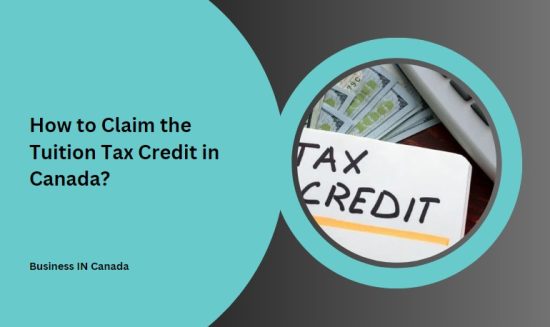
To claim the tuition tax credit in Canada, you need to follow a few simple steps. First, make sure that you have received your T2202 form from your educational institution. This form will show how much eligible tuition and fees you paid for the year. Next, enter this information into your tax return software or provide it to your accountant if they prepare your taxes.
The software or accountant will automatically calculate the amount of tax credit you can receive based on the information provided. If you have unused tuition amounts from previous years, don’t forget to include those as well since they can be carried forward and used in future years.
It’s important to keep all receipts and documents related to your education expenses in case the government requests them as proof of eligibility for the tuition tax credit. By following these simple steps and keeping accurate records, claiming your tuition tax credit should be stress-free.
What is a T2202 Tax Form?
The T2202 tax form, also known as the Education and Textbook Amounts Certificate, is a document issued by Canadian educational institutions to their students. This form certifies that the student has paid for tuition fees, textbooks or other eligible expenses related to their education.
In order to claim the tuition tax credit in Canada, you will need this form as it contains important information, such as the number of eligible tuition fees paid and months attended during the taxation year. It’s worth noting that only amounts over $100 are eligible for this credit, and you can claim a maximum amount per year. The T2202 form helps determine what portion of your tuition costs qualify for these credits.
If you have more than one T2202 form from different institutions, make sure to add up all of your eligible expenses before claiming them on your taxes. Remember to keep all forms and receipts relating to education expenses just in case you get audited by Canada Revenue Agency (CRA).
What is Excluded From the Tuition Tax Credit?
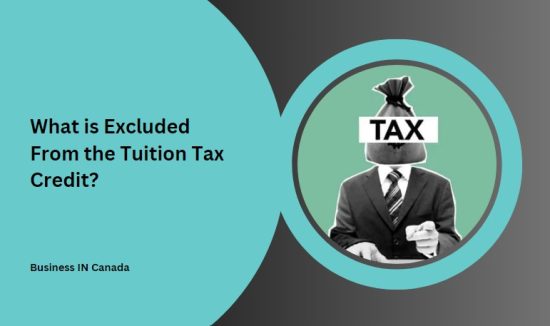
While tuition tax credits can be a great way to save money on your taxes, it’s important to understand what expenses are excluded from this credit. In general, the tuition tax credit only applies to the cost of tuition fees at eligible institutions. Expenses that are not considered eligible for the tuition tax credit include room and board, textbooks, transportation costs, student association fees or charges for extracurricular activities.
These expenses cannot be claimed as part of your tuition tax credit. It’s also important to note that if you receive scholarships or bursaries that cover the full cost of your tuition fees, you won’t be able to claim a tuition tax credit for those particular expenses. Additionally, suppose you’re claiming education-related expenses for someone else, such as a spouse or dependant child.
In that case, their expenses must also meet these same eligibility criteria in order for them to qualify for the tuition tax credit. Understanding what is excluded from the tuition tax credit can help ensure that you only claim eligible expenses and avoid any potential issues with Canada Revenue Agency (CRA).
What Happens to Your Unused Tax Credit?
When it comes to the tuition tax credit, you may find yourself with unused portions. So, what happens to these unused tax credits? Well, don’t worry, they won’t go to waste. It’s important to know that tuition tax credits can be carried forward indefinitely. This means that if you have any unused amounts in a given year, you can carry them over and use them in future years when you have more taxable income.
It is also possible for students to transfer up to $5,000 of their unused tuition tax credits each year to their spouse or common-law partner. However, this option is only available if the student doesn’t need all of their credits for themselves. In some cases where there are still unused credits after carrying them forward and transferring them to a spouse or partner, parents or grandparents may be able to claim the remaining amount if they provided financial support for the student’s education.
While it may seem like a loss at first glance when having leftover tuition tax credits – rest assured that there are options available so these benefits do not go completely wasted.
How Do I Use Unused Tuition Credits in Canada?
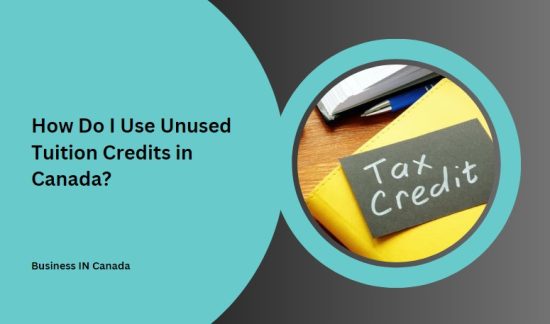
If you have unused tuition credits in Canada, a few options are available. One option is to carry forward the unused amount to future tax years. This means that if you don’t need the credit this year, it can be applied to reduce taxes owed in future years. Another option is to transfer your unused tuition credits to a parent or grandparent.
In order for this transfer to occur, both parties must complete Form T2202, and the student must authorize the transfer on their tax return. It’s important to note that once your tuition credits have been transferred, they cannot be used by anyone else – including yourself – in future years.
However, if the transferred amount exceeds what the parent or grandparent needs for their own taxes owed, they may also carry any excess forward. If neither carrying forward nor transferring your tuition credits work for you, consider donating them to a designated educational institution. By doing so, you will receive a charitable donation receipt which can then be used for tax purposes.
Conclusion
After reading through this blog post, it should be clear that a tuition tax credit in Canada can provide significant financial relief for students and their families. By reducing the amount of income tax owed to the government, the credit can help alleviate some of the burden associated with paying for higher education.
Claiming a tuition tax credit involves obtaining a T2202 form from your educational institution and including it with your annual income tax return. While there are certain expenses that do not qualify for this credit, many common costs, such as textbooks and course materials, do.
FAQ – What is Tuition Tax Credit in Canada?
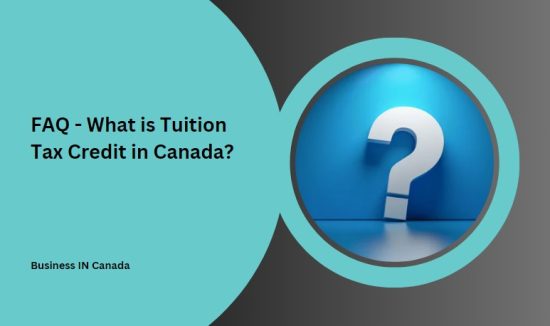
How much do you get back for tuition tax credit Canada?
The amount you can get back from the tuition tax credit in Canada depends on a few factors. First, it’s important to note that this is not a refund but rather a credit against taxes owed. The credit is calculated as 15% of the eligible tuition fees paid for the year. Eligible fees include those paid to universities, colleges, and other government-recognized educational institutions. They also include examination fees required for certification or licensure in a trade or profession.
However, there are some limitations to how much you can claim each year. You cannot claim more than $5,000 in eligible expenses per year per student. Additionally, any unused amounts cannot be carried forward to future years. Though, taking advantage of the tuition tax credit can provide significant savings come tax season for students or their supporting family members who have incurred education-related costs during the year.
Can I claim my child’s university tuition on taxes Canada?
As a parent, you might be wondering if you can claim your child’s university tuition on taxes in Canada. The answer is yes! If your child is enrolled in a post-secondary institution and meets the eligibility requirements for the tuition tax credit, then you can claim their tuition fees on your tax return.
To be eligible for the tuition tax credit, your child must have attended an accredited educational institution that is recognized by the Canada Revenue Agency (CRA). They must also have received a T2202 form from their school outlining their eligible education expenses.
It’s worth noting that if your child has unused tuition credits, they can carry them forward to future years or transfer them to another family member. However, only one person can claim these credits at any given time. When claiming your child’s tuition fees on your taxes, keeping all receipts and documentation as proof of payment is important. This will help ensure that everything runs smoothly should you ever get audited by the CRA.
Claiming your child’s university tuition on taxes in Canada provides some relief for parents supporting their children through higher education.
Why does T2202 reduce tax refund?
The T2202 tax form is an important document for students in Canada, as it allows them to claim the tuition tax credit on their taxes. However, many students are surprised that claiming this credit reduces their tax refund instead of increasing it.
This is because the tuition tax credit is a non-refundable credit, which means that it can only be used to offset any taxes owed. If you don’t owe any taxes or your other credits and deductions have already reduced your taxes owing to zero, the tuition tax credit will not provide any additional benefit.
In fact, if you have unused tuition credits from previous years and you’re still not able to use them up this year due to low income or other reasons, they may expire and become worthless. While this may seem frustrating at first glance, it’s important to remember that the purpose of the tuition tax credit is not necessarily to increase your refund but rather to help reduce your overall financial burden as a student by providing some relief from high education costs.
Who can claim tuition tax credit Canada?
The tuition tax credit in Canada can be claimed by the person who paid the eligible tuition fees. This means that if you paid your tuition fees, you can claim the tax credit. If someone else, such as a parent or spouse, paid your tuition fees on your behalf, they may also be eligible to claim the tax credit.
If you have taken out a student loan and are paying it back yourself, then you are also entitled to claim the tax credit for those payments. However, if someone else is making payments towards your student loan on your behalf (such as a parent), they cannot claim this tax credit.
It’s important to note that only certain types of educational institutions qualify for the tuition tax credit in Canada. These include universities and colleges offering post-secondary courses and vocational schools providing occupational skills training. In addition, only courses that lead to recognized certificates or diplomas qualify for this tax credit. Therefore, non-credit-based courses like seminars or workshops do not fall under this category.
Anyone who has paid their eligible tuition fees or made payments towards an eligible student loan can claim the Canadian tuition tax credits on their income taxes.
Can parents claim tuition tax credit?
The tuition tax credit is a great way to reduce the cost of education in Canada. It provides students with a refundable credit for eligible tuition fees paid and can be claimed by both part-time and full-time students. Eligibility requirements must be met, and unused credits can be carried forward to future years or transferred to parents or grandparents.
As for whether parents can claim the tuition tax credit depends on who paid the tuition fees. If the student paid their own fees, then they are entitled to claim them. However, if the parent or grandparent paid for them instead, they may be able to transfer any unused credits from previous years.
Understanding how tuition tax credits work in Canada can save you money when it comes time to file your taxes. By keeping accurate records of your eligible expenses and claiming all available credits each year, you’ll have more funds available for other important things like textbooks or living expenses while pursuing your educational goals.










